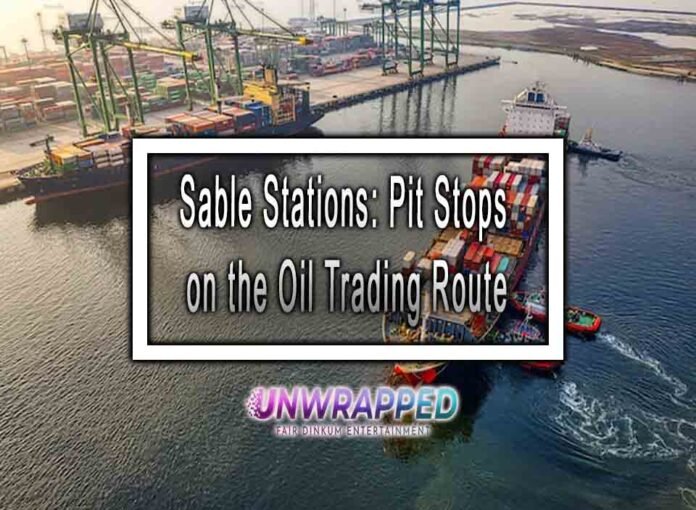Within the intricate framework of the global oil trading industry, Sable Stations occupy a pivotal role as indispensable waystations. These stations function as vital nodes along the trading route for one of the world’s most coveted commodities: oil. In this comprehensive article, we embark on an in-depth exploration of the multifaceted realm of Sable Stations, unveiling their historical origins, operational intricacies, economic significance, environmental ramifications, and future prospects. If you’re interested in trading oil, you may want to check out Oil Edge official website as a potential platform to do so.
The Birth of Sable Stations
Historical Background and Emergence
Sable Stations didn’t spring up overnight. They have a rich history dating back to the early days of the oil industry. Initially, they were traditional refineries, but their role evolved over time.
Evolution from Traditional Refineries
Sable Stations transitioned from conventional refineries to modern trading hubs. This evolution was driven by a shift in the global oil trading landscape, demanding more sophisticated facilities for oil storage, processing, and distribution.
Key Players and Stakeholders
Understanding the birth of Sable Stations requires a look at the key players and stakeholders involved. National governments, multinational corporations, and independent traders all played significant roles in shaping these stations.
Sable Stations: Trading Dynamics
Geographical Locations
Sable Stations are strategically located around the world. They are often situated near major oil-producing regions or along important trade routes. These locations are chosen to minimize transportation costs and optimize access to markets.
Facilitating Global Oil Trading
Sable Stations serve as critical intermediaries in the global oil trade. They provide a range of services, including storage, blending, and distribution. This facilitates the movement of oil from producers to consumers across the globe.
Geopolitical Factors
The operations of Sable Stations are closely tied to geopolitics. Changes in government policies, trade sanctions, and international conflicts can significantly impact their operations and profitability. An analysis of these factors is essential for understanding the oil trading landscape.
Infrastructure and Facilities
Infrastructure Investments
Sable Stations invest heavily in infrastructure to ensure efficient operations. This includes pipelines, storage tanks, loading and unloading facilities, and advanced monitoring systems. These investments are crucial for handling vast quantities of oil.
Storage Capacities and Logistical Capabilities
One of the primary functions of Sable Stations is oil storage. They boast enormous storage capacities, often measured in millions of barrels. This ensures a steady supply of oil to the market, even during supply disruptions.
Technological Advancements
Sable Stations are at the forefront of technological innovation. They utilize state-of-the-art equipment and software for monitoring inventory, managing logistics, and ensuring the safety of their operations.
Economic Significance
Contribution to the Economy
Sable Stations make significant contributions to both local and global economies. They generate substantial revenue through trading activities, create jobs, and stimulate economic growth in their host regions.
Job Creation and Employment Opportunities
The operations of Sable Stations require a skilled workforce. They provide employment opportunities for engineers, technicians, logistics experts, and support staff. The multiplier effect on local employment is substantial.
Tax Revenue Generation
The tax revenue generated by Sable Stations is vital for funding local development projects, infrastructure improvements, and public services. Governments often rely on this revenue to bolster their budgets.
Environmental and Social Impacts
Environmental Regulations and Sustainability
Sable Stations face increasing pressure to adhere to stringent environmental regulations. Efforts are being made to minimize emissions, reduce water usage, and employ sustainable practices in oil handling and transportation.
Mitigating the Environmental Footprint
Technological advancements have led to the development of cleaner and more efficient processes within Sable Stations. These efforts aim to mitigate the environmental footprint of the oil industry.
Role in Local Communities
Sable Stations are often located in remote or economically disadvantaged areas. Their presence can have both positive and negative social impacts on local communities. Understanding and addressing these impacts is crucial for sustainable development.
Challenges and Future Prospects
Regulatory Challenges
The complex web of regulations governing Sable Stations can pose significant challenges. Staying compliant with environmental, safety, and trade regulations requires constant vigilance.
Technological Disruptions
As the world transitions to cleaner energy sources, Sable Stations face the challenge of adapting to changing market dynamics. The rise of renewable energy and electric vehicles could reshape the oil trading landscape.
Role in the Transition to Renewable Energy
The future of Sable Stations may include diversification into renewable energy sources or carbon capture technologies. Their adaptability will determine their relevance in the evolving energy sector.
Conclusion
Sable Stations are the unsung heroes of the global oil trading industry. Their historical evolution, critical role in facilitating oil trade, economic contributions, environmental efforts, and adaptation to future challenges make them a fascinating subject of study. Understanding Sable Stations is not just about comprehending the past and present of oil trading but also about envisioning their role in shaping the energy landscape of tomorrow. As we navigate the ever-changing seas of energy, these pit stops remain essential waypoints on the journey.










